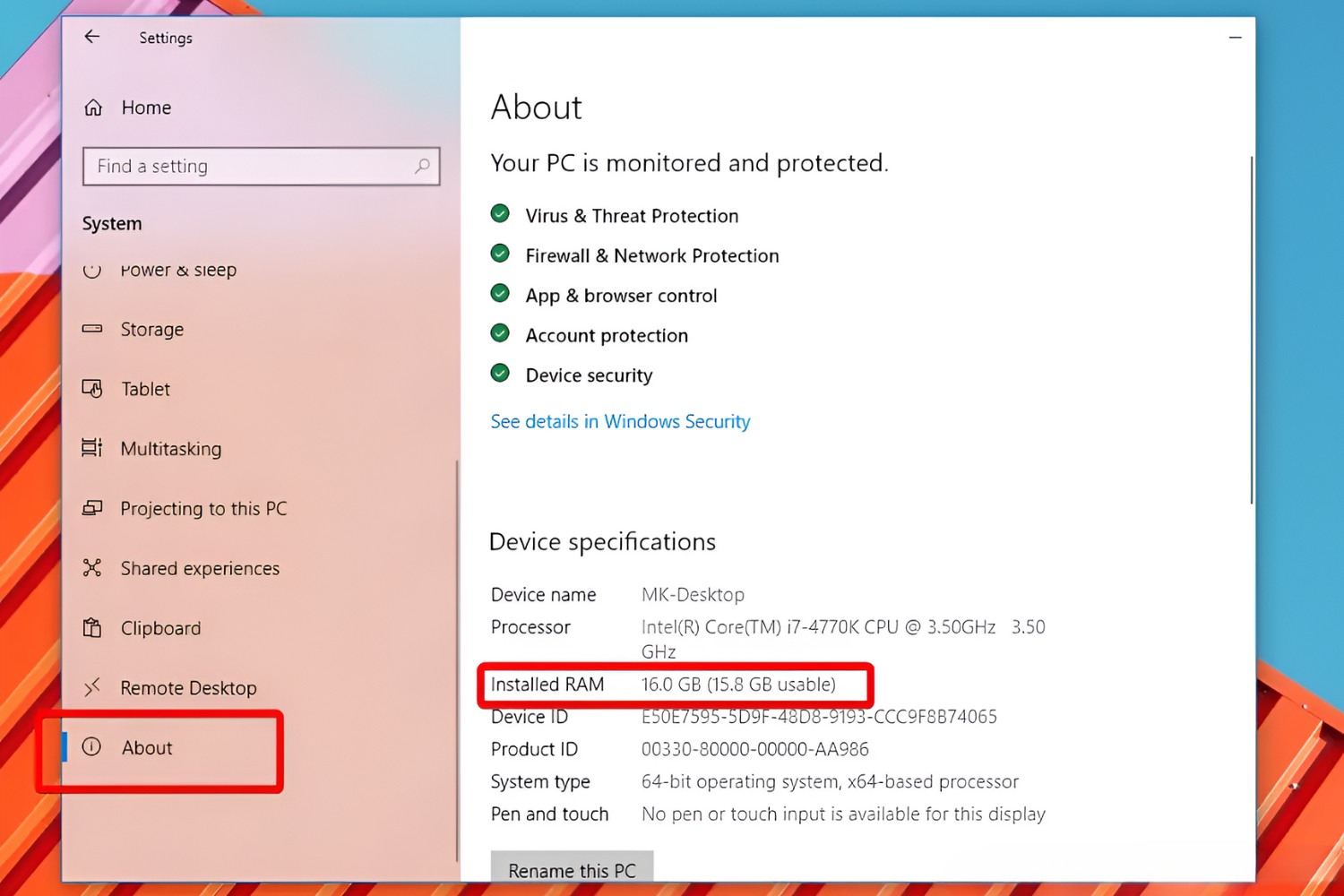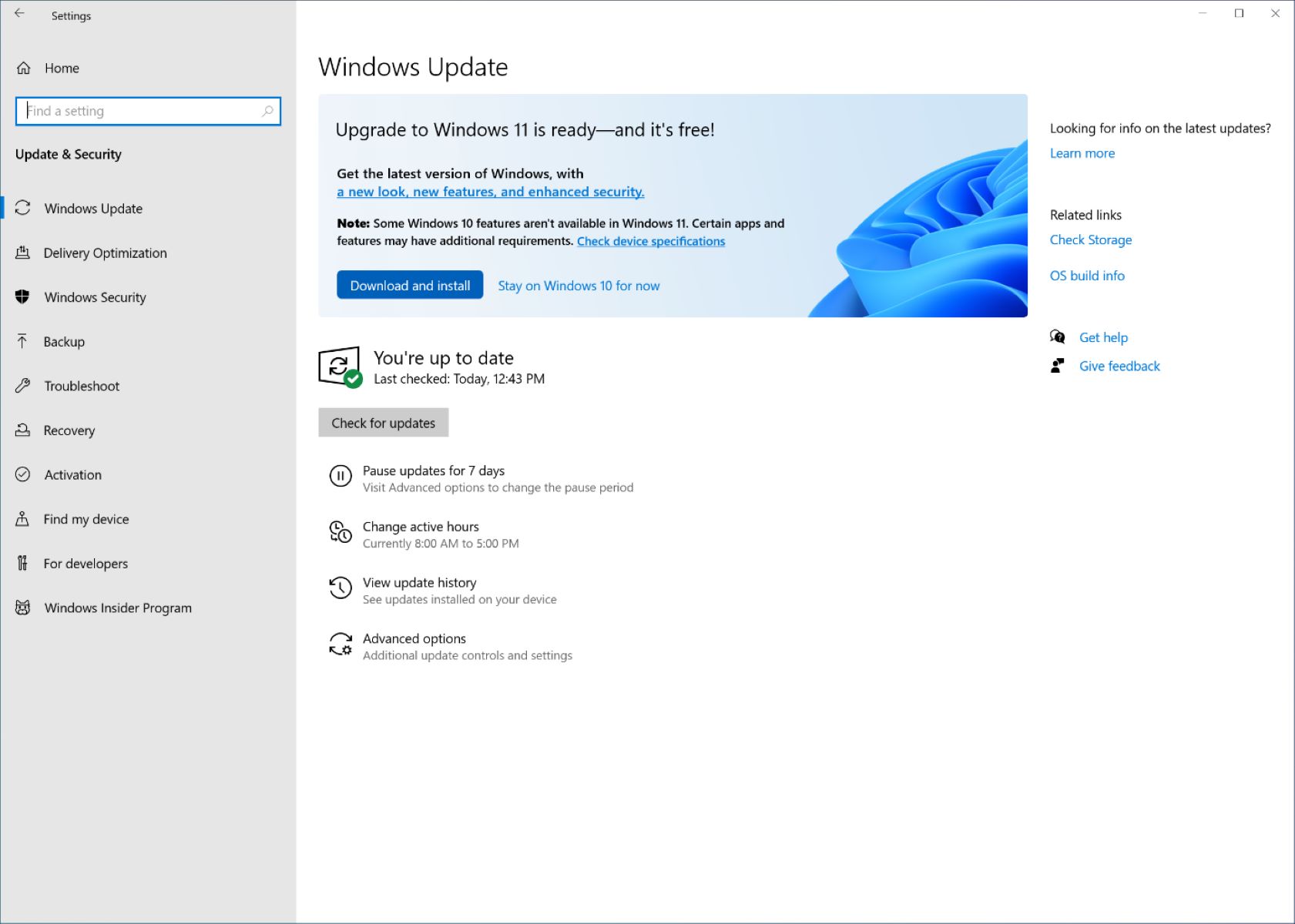Overview
In the world of investment banking, the CIM, short for Confidential Information Memorandum, plays a crucial role. A CIM is a document that provides detailed information about a company or an asset that is being offered for sale. It serves as a comprehensive guide for potential buyers, providing them with a deep understanding of the business and its market position. The CIM is carefully crafted to showcase the company’s strengths, while also addressing any potential risks or weaknesses. It is considered a critical tool in the mergers and acquisitions (M&A) process, as it helps facilitate due diligence and attracts potential buyers.
The primary purpose of a CIM is to provide potential buyers with the necessary information to evaluate the investment opportunity. It is designed to pique their interest and entice them to further explore the potential acquisition. The document typically includes an executive summary, a detailed description of the business, financial statements, market analysis, management team profiles, and other relevant information. The CIM is often shared with a select group of qualified buyers who have signed a non-disclosure agreement to ensure confidentiality.
The content of a CIM is carefully curated to present the company or asset in the best light possible. It highlights the company’s unique selling points, such as its market share, competitive advantage, and growth potential. Additionally, it provides a thorough analysis of the market and industry trends, including any notable challenges or opportunities. Financial data, including historical performance, projections, and key metrics, offer potential buyers a deeper understanding of the company’s financial health and growth prospects.
There are several benefits to creating a CIM when marketing a company or asset for sale. Firstly, it showcases the attractiveness of the investment opportunity to potential buyers, helping generate interest and competition. The CIM acts as a marketing tool, presenting the company or asset in its best light and highlighting its competitive advantage. Secondly, it provides a structured and organized overview of the business, making it easier for potential buyers to assess the opportunity and conduct due diligence. Thirdly, the CIM helps filter out unqualified buyers and attracts serious investors who are genuinely interested in pursuing the acquisition.
Creating a CIM requires a thoughtful and strategic approach. The document should be well-written, concise, and compelling. It is essential to analyze the target audience and tailor the content accordingly, emphasizing the key aspects that are likely to resonate with potential buyers. Collaboration between investment bankers, financial analysts, and subject matter experts is crucial to gathering the necessary information and presenting it in a coherent and compelling manner. Regular updates to the CIM may be necessary to reflect any market or business changes and to keep the information current.
What is a CIM?
A CIM, short for Confidential Information Memorandum, is a comprehensive document used in investment banking to provide detailed information about a company or asset that is being offered for sale. Also known as a “deal book,” the CIM serves as a crucial marketing tool in the mergers and acquisitions (M&A) process. It is typically created by investment bankers and financial analysts to attract potential buyers and facilitate the due diligence process.
The purpose of a CIM is to present a thorough overview of the investment opportunity to potential buyers. It serves as a confidential document that contains both qualitative and quantitative information about the company or asset. The CIM acts as a key resource for investors to evaluate the potential risks and rewards associated with the acquisition. It is carefully crafted to highlight the company’s strengths, industry positioning, and growth prospects, while also addressing any concerns or challenges that may be present.
The content of a CIM may vary depending on the specific transaction and industry. However, it typically includes an executive summary, business description, financial statements, market analysis, competitive landscape, management team profiles, and any other relevant information. The executive summary serves as a concise overview of the investment opportunity, capturing the essence of the deal and grabbing the attention of potential buyers.
The business description section provides a detailed overview of the company or asset being sold. It covers aspects such as the history, products or services, target market, customer base, and any unique selling points. Financial statements, including income statements, balance sheets, and cash flow statements, offer a clear picture of the company’s financial performance and stability.
The market analysis section provides insights into the industry landscape, market trends, and potential growth opportunities. It may include data on market size, growth rates, competitive analysis, and regulatory considerations. Additionally, the CIM will often highlight the management team’s qualifications and track record, as well as details on any intellectual property or key contracts that may be relevant.
Overall, a CIM plays a pivotal role in the M&A process by providing potential buyers with the necessary information and insights to make informed decisions. It is a confidential document that showcases the investment opportunity, highlights key strengths, addresses potential risks, and ultimately, helps generate interest from serious buyers. A well-crafted CIM can engage investors, facilitate due diligence, and maximize the chances of a successful transaction.
Purpose of a CIM
The Confidential Information Memorandum (CIM) serves several crucial purposes in the investment banking and mergers and acquisitions (M&A) process. It is a comprehensive document that provides potential buyers with detailed information about a company or asset being offered for sale. The primary purpose of a CIM is to facilitate the evaluation of the investment opportunity and attract potential buyers. Let’s delve into the key purposes of a CIM in more detail.
1. Evaluating the Investment Opportunity: A CIM allows potential buyers to assess the viability and attractiveness of the investment opportunity. It provides a comprehensive overview of the company’s operations, financial performance, market positioning, and growth prospects. This information enables buyers to evaluate the potential risks, rewards, and synergies associated with the acquisition.
2. Showcasing the Company’s Value: The CIM is meticulously crafted to present the company or asset in its best light. It highlights the company’s competitive advantages, unique selling points, and potential for growth. By showcasing the company’s value, the CIM aims to attract potential buyers and generate interest in the acquisition.
3. Facilitating Due Diligence: Due diligence is a critical step in the M&A process, where potential buyers thoroughly evaluate the company’s financials, operations, legal, and other aspects. The CIM acts as a guide, providing a structured and organized overview of the company’s key information. It assists potential buyers in conducting their due diligence more efficiently and effectively.
4. Filtering Out Unqualified Buyers: The CIM serves as a gatekeeper in the M&A process, ensuring that only serious and qualified buyers proceed further. By providing detailed information about the company, financials, and market, the CIM helps potential buyers determine if the investment aligns with their strategic objectives and financial capabilities.
5. Building Trust and Confidentiality: The CIM is typically shared with a select group of potential buyers who have signed a non-disclosure agreement (NDA). This ensures confidentiality and builds trust between the seller and potential buyers. The CIM conveys that the seller is serious about the transaction and provides an exclusive opportunity for the buyers to evaluate the investment opportunity.
In summary, the purpose of a CIM is to present potential buyers with a comprehensive and compelling overview of the investment opportunity. It helps evaluate the viability and attractiveness of the acquisition, showcases the company’s value, facilitates due diligence, filters out unqualified buyers, and establishes trust and confidentiality. A well-crafted CIM plays a critical role in attracting serious buyers and increasing the chances of a successful M&A transaction.
Contents of a CIM
The Confidential Information Memorandum (CIM) is a comprehensive document that provides potential buyers with detailed information about a company or asset being offered for sale. The content of a CIM may vary depending on the specific transaction and industry. However, it typically includes the following key sections:
1. Executive Summary: The executive summary is a concise overview of the investment opportunity. It captures the essence of the deal, highlighting the key strengths, market position, and potential for growth. The goal of the executive summary is to grab the attention of potential buyers and entice them to explore the opportunity further.
2. Company Overview: This section provides a detailed description of the company being sold. It includes information about the company’s history, mission, products or services, target market, and any unique selling points. This section aims to provide potential buyers with a holistic understanding of the company and its operations.
3. Financial Information: The financial section includes detailed information about the company’s financial performance. It typically includes historical financial statements, such as income statements, balance sheets, and cash flow statements. It may also include financial projections, key performance metrics, and any relevant financial ratios. This section helps potential buyers assess the company’s financial health and growth prospects.
4. Market Analysis: The market analysis section provides insights into the industry landscape, market trends, and potential growth opportunities. It may include market size, growth rates, market share, competitive analysis, and regulatory considerations. This section offers potential buyers an understanding of the company’s position within the market and the potential for future success.
5. Competitive Landscape: This section focuses on the company’s competitors and its competitive advantage. It includes an analysis of rivals in the industry, their market share, and any differentiating factors for the company being sold. The competitive landscape section allows potential buyers to evaluate the company’s positioning and its ability to excel in a competitive marketplace.
6. Management Team and Operations: This section provides information about the management team’s qualifications, experience, and track record. It also covers the company’s organizational structure, key personnel, and any strategic partnerships. Understanding the management team and operational structure gives potential buyers confidence in the company’s ability to execute its business plans.
7. Risks and Challenges: The risks and challenges section acknowledges potential risks and challenges that the company may face. It covers areas such as regulatory hurdles, technological disruptions, macroeconomic factors, or any other industry-specific risks. This section aims to provide transparency and enable potential buyers to evaluate and mitigate potential risks.
The CIM may also include additional sections such as legal and intellectual property information, customer and supplier relationships, future growth strategies, and any other information deemed relevant to the specific transaction. It is important for the CIM to be well-organized, concise, and compelling, providing potential buyers with a thorough understanding of the investment opportunity without overwhelming them with unnecessary details.
Benefits of a CIM
The Confidential Information Memorandum (CIM) serves as a crucial tool in the investment banking and mergers and acquisitions (M&A) process. It offers numerous benefits to both sellers and potential buyers, facilitating the evaluation of an investment opportunity and increasing the chances of a successful transaction. Let’s explore the key benefits of a CIM in more detail.
1. Showcases the Investment Opportunity: A well-crafted CIM effectively showcases the investment opportunity to potential buyers. It highlights the company’s value proposition, unique selling points, and growth potential. By presenting the opportunity in an organized and compelling manner, the CIM captures the attention of potential buyers and generates interest in the acquisition.
2. Provides Comprehensive Information: The CIM offers potential buyers comprehensive information about the company or asset being sold. It includes details such as the company’s history, financial performance, market analysis, and competitive landscape. This wealth of information allows buyers to make informed decisions and conduct thorough due diligence, saving time and effort in the process.
3. Facilitates Due Diligence: Due diligence is a critical stage in the M&A process, where potential buyers assess the company’s operations, financials, and legal aspects. The CIM acts as a guiding document, providing a structured overview of the company’s key information. It assists buyers in conducting due diligence more efficiently by offering a centralized source of information and ensuring that no critical aspects are overlooked.
4. Filters Out Unqualified Buyers: The CIM helps filter out unqualified or non-serious buyers, ensuring that only legitimate potential buyers proceed in the acquisition process. By requiring potential buyers to sign a non-disclosure agreement (NDA) to receive the CIM, sellers can limit the distribution of sensitive information and focus on engaging with serious buyers who have demonstrated genuine interest and capabilities.
5. Enhances Buyer-Seller Communication: The CIM serves as a communication tool, enabling effective and efficient communication between sellers and potential buyers. It creates a common understanding of the investment opportunity, streamlines discussions, and fosters a more productive negotiation process. The CIM serves as a point of reference for both parties, ensuring that all essential details are captured and addressed.
6. Builds Investor Confidence: By sharing comprehensive and well-prepared information, the CIM helps build investor confidence in the investment opportunity. It demonstrates a commitment to transparency and empowers potential buyers to assess the risks and rewards associated with the acquisition. This transparency can lead to stronger investor interest, competitive bidding, and ultimately a higher likelihood of a successful transaction.
7. Increases Transaction Efficiency: A CIM streamlines the M&A process by providing potential buyers with the necessary information upfront. Buyers can evaluate the opportunity and determine their level of interest more efficiently, reducing the need for extensive back-and-forth discussions. This increased efficiency can save time and resources for both buyers and sellers, accelerating the transaction process.
In summary, the CIM offers valuable benefits to both sellers and potential buyers. It effectively showcases the investment opportunity, provides comprehensive information, facilitates due diligence, filters out unqualified buyers, enhances communication, builds investor confidence, and increases transaction efficiency. By leveraging the benefits of a well-structured and comprehensive CIM, sellers can attract serious buyers and increase the likelihood of a successful M&A transaction.
How to Create a CIM
Creating a well-crafted Confidential Information Memorandum (CIM) requires careful planning and attention to detail. The CIM serves as a critical tool in the investment banking and mergers and acquisitions (M&A) process, providing potential buyers with comprehensive information about a company or asset being offered for sale. Let’s explore the key steps involved in creating a CIM.
1. Define the Target Audience: The first step in creating a CIM is to define the target audience. Understanding the preferences and needs of potential buyers helps tailor the content and structure of the document to resonate with their interests. This could include focusing on specific industry sectors, geographic locations, or types of investors.
2. Gather and Analyze Information: Next, gather all relevant information about the company or asset being sold. This includes financial statements, market research, operational details, management bios, legal documentation, and any other information that will provide a comprehensive understanding of the investment opportunity. Analyze the information to identify key strengths, potential risks, and differentiating factors.
3. Outline the CIM: Develop an outline for the CIM, organizing the information into logical sections. Common sections include an executive summary, company overview, financial information, market analysis, competitive landscape, management team, and risks and challenges. The outline serves as a roadmap for structuring and organizing the content effectively.
4. Write Clearly and Concisely: When writing the CIM, ensure that the content is clear, concise, and engaging. Avoid jargon and technical terms that may confuse the reader. Use language that is easy to understand while conveying the necessary details. Incorporate storytelling techniques and compelling narratives to create a more engaging and memorable document.
5. Highlight Key Points: It is essential to highlight the key points and unique selling propositions of the company or asset. Emphasize the company’s competitive advantages, growth potential, and any notable achievements. This helps potential buyers understand the value proposition and encourages further exploration of the investment opportunity.
6. Showcase Financial Performance: The CIM should include accurate and up-to-date financial information. Present historical financial statements, financial ratios, and key performance indicators that provide insights into the company’s financial health and growth trajectory. Include financial projections if available and explain the assumptions underlying those projections.
7. Address Potential Risks and Challenges: Recognize and address potential risks and challenges that the company may face. Discuss mitigation strategies and contingency plans to reassure potential buyers. This demonstrates transparency and allows buyers to evaluate and manage potential risks effectively.
8. Create an Attractive Design: Consider the visual presentation of the CIM. Use appropriate fonts, colors, and formatting to make the document visually appealing and easy to read. Incorporate graphs, charts, and visuals to enhance the understanding of key data and trends.
9. Review and Update: Review the draft CIM thoroughly to ensure accuracy, consistency, and coherence. Seek feedback from experts and stakeholders, making necessary revisions. Regularly update the CIM to reflect any changes in the company, industry, or market conditions.
By following these steps, you can create a compelling and comprehensive CIM that effectively showcases the investment opportunity, attracts potential buyers, and facilitates the M&A process.
Important Considerations for a CIM
Creating a successful Confidential Information Memorandum (CIM) involves careful consideration of various factors to ensure its effectiveness in attracting potential buyers and facilitating the mergers and acquisitions (M&A) process. Here are some important considerations to keep in mind when preparing a CIM:
1. Confidentiality: Protecting the confidentiality of the information included in the CIM is crucial. Limit the distribution of the CIM to qualified, serious buyers who have signed a non-disclosure agreement (NDA). This ensures that sensitive information about the company or asset remains confidential and is not disclosed to unauthorized parties.
2. Targeted Content: Tailor the content of the CIM to the specific needs and interests of the target audience. Understand their preferences, motivations, and investment criteria to effectively communicate the value proposition of the investment opportunity. Highlight key aspects that align with the potential buyer’s strategic objectives and demonstrate the potential synergies or benefits.
3. Accuracy and Data Integrity: Ensure that the information presented in the CIM is accurate, reliable, and supported by credible sources. Validate financial data, market research, and any other data included in the document to build trust with potential buyers. Inaccurate or misleading information can undermine the credibility of the CIM and negatively impact buyer confidence.
4. Balance Transparency: While it is important to present the investment opportunity in a favorable light, it is equally crucial to provide a transparent and balanced view. Address potential risks, challenges, and uncertainties associated with the company or asset being sold. Honesty and transparency build trust and help potential buyers evaluate and mitigate risks effectively.
5. Clear Communication: Use clear, concise, and understandable language in the CIM. Avoid excessive jargon or technical terms that may confuse potential buyers. Present information in a logical and organized manner, making it easy for readers to navigate the document and understand the key points and insights.
6. Engaging Design: Consider the visual presentation of the CIM. Use an appealing and professional design layout that enhances readability with appropriate fonts, colors, and formatting. Incorporate charts, graphs, and visuals to illustrate key data and trends. An engaging design can enhance the impact of the CIM and help capture the attention of potential buyers.
7. Regular Updates: Keep the CIM updated with the latest information about the company, industry, and market conditions. As circumstances change, such as financial performance or industry trends, it is important to revise and update the CIM to maintain its relevance. An outdated CIM may raise questions about the accuracy and reliability of the information provided.
By carefully considering these factors, you can create a CIM that effectively communicates the investment opportunity, builds trust, and attracts serious buyers. A well-crafted CIM increases the likelihood of a successful M&A transaction and helps create a positive impression of the company or asset being sold.
Conclusion
The Confidential Information Memorandum (CIM) serves as a crucial document in the investment banking and mergers and acquisitions (M&A) process. It provides potential buyers with a comprehensive overview of a company or asset being offered for sale, facilitating the evaluation of the investment opportunity. The CIM plays a pivotal role in attracting serious buyers, facilitating due diligence, and ultimately increasing the chances of a successful transaction.
By showcasing the investment opportunity, outlining the key details, and providing comprehensive information, the CIM helps potential buyers assess the viability and attractiveness of the acquisition. It highlights the company’s strengths, market position, growth potential, and financial performance. Addressing potential risks and challenges adds transparency and helps buyers evaluate and mitigate risks effectively.
Creating an effective CIM requires careful consideration of the target audience, accurate data, clear and concise communication, and an engaging design. Tailoring the content to the needs and interests of prospective buyers enhances the document’s relevance and resonance. Protecting confidentiality and maintaining data integrity build trust with potential buyers.
Regular updates to the CIM ensure that it remains current with changes in the company, industry dynamics, and market conditions. An up-to-date CIM provides accurate and relevant information, instilling confidence in potential buyers and allowing for informed decision-making.
In summary, the CIM is a powerful tool that communicates the investment opportunity, facilitates due diligence, and helps attract serious buyers. Careful crafting and attention to detail are essential to create a compelling and comprehensive CIM. By leveraging the benefits of a well-structured CIM, sellers can maximize their chances of a successful M&A transaction, while potential buyers can make informed decisions that align with their strategic objectives and financial capabilities.

























